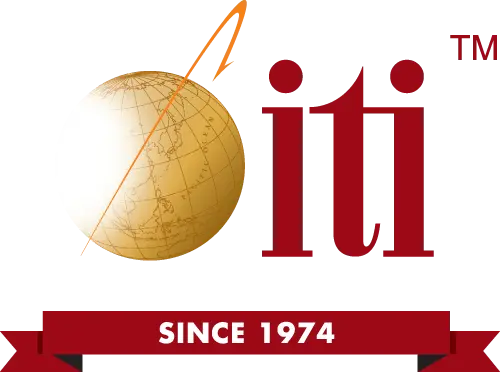
The best time for industrial supply chain communication is immediately. So what do you do when real-time communication in procurement sourcing isn’t fast enough?
In personal and business relationships alike, communication is key. That communication can deliver a tough criticism, an inspiring outlook or a looming uncertainty. In business at least, no matter the message, the time to hear it is right now. Managers and executives cannot make critical decisions concerning their industrial supply chains without sound data, and the timeliness of that data can make all the difference between a smooth pivot and a significant failure.
Let’s take a look at real-time communication in supply chain procurement sourcing and how it can be improved.
Critical Procurement Communication Loops
We like to say that communication paths are not straight, but circular. Communicating in one direction may certainly broadcast a message, but it doesn’t offer a return path for valuable feedback.
Instead, circular communication inherently calls for feedback, seeking confirmation and improvement of the message between all parties. Think of communication as a loop, where a message is conveyed, a response absorbed and the loop repeated until both the message and its meaning are optimized.
This concept amplifies the need for real-time communication to include real-time feedback as well, and is outright necessary for critical supply chain decision processes such as the examples below.
- Status: When buyers want to know the status of their active orders today, that question is loaded with many more inferences under the hood. A single snapshot is expected to convey the status of product quality, defect rates, financial performance and so much more. Even more importantly, status updates (like the weekly email updates that ITI provides to customers) are meant to signal upcoming expectations, conveying what buyers should expect in future updates. This is what makes status communication cyclical: not just knowing conditions now, but also what those conditions mean moving forward.
- KPI accuracy. While we love key performance indicators as much as the next supply chain professional, we know that KPIs are only as useful as they are accurate.
Take a simple example: perfect order rate. If we make decisions around a perfect order rate that is five to 10 points too high or low, we’re making poorly guided decisions based on bad data. This makes all communication around KPIs critical, both in ensuring data is being broadcast effectively and in real-time, as well as in making sure that feedback loops to validate KPI accuracy are provided.
- Risk awareness. Some buyers may say that margin erosion is the largest risk they want to be aware of at all times, others want to know about logistics delays, raw material availability, manufacturing throughput and so on.
Whatever risk keeps a buyer up at night, that’s the one their communication loops should center around. Real-time risk awareness is critical in industrial procurement sourcing, and cannot be limited to unidirectional communication.
The three risk awareness questions that we usually build this comms loop around are: What is my current risk profile, what do we do about these risks and what are the commercial impacts should these risks propagate?
- Seamless pivots. When communication loops are firing on all cylinders, buyers know precisely where they stand, and upstream partners do as well. When an inevitable hiccup occurs, high-tier communication feedback allows partners upstream and down to seamlessly pivot to mitigate the concern.
For example, having high transparency with a key supplier can bring early warning of potential disruptions, allowing a buyer to activate surplus inventory early enough that the resolution becomes more of a course correction, not a disaster recovery.
- Tactical opportunities. Every now and again, a lucrative opportunity lands in a buyer’s lap, theirs for the taking should they have upstream supply capacity to tap into. Active communication loops with suppliers create pathways for deep understanding of upstream capacity, and set up buyers to jump on tactical opportunities as soon as they arise. Likewise, suppliers can differentiate themselves by communicating heightened readiness to serve such opportunities, setting up a win-win for everyone.
- Customer satisfaction. As much as capacity, margin and status communication loops are critical in industrial procurement sourcing, the only real feedback loop of existential importance is the one with customers. Are customer needs being met? Are they satisfied with their buying experience? What changes would they like to see made in their transactions? How might their expectations be exceeded?
All of these questions and more are the basis of customer communication loops that serve the core of our businesses, assuring that every decision made within a supply chain tracks explicitly to a customer’s wants or needs.
When Real-Time Communication Isn’t Fast Enough
Setting up hyper-reactive communication loops as we described above is a vital process in today’s manufacturing world, but more and more we must push the limits even further to meet the challenges of tomorrow. In these cases, we like to say that real-time communication is not enough: We must set our sights on preempting communication loops before they’re even needed.
Now, we know this is starting to sound like predicting the future, and in some ways, it is: Whoever solves this problem will have invented a version of magic. Until that time comes, here are three practical ways to move faster than real-time communication.
Active Risk Management
Building upon the above point, technological systems are increasingly used today to govern the realm of supply chain risk management. The National Counterintelligence and Security Center (NCSC) published a recent guidance document describing the need for active risk management in critical U.S. supply chains as a matter of national security.
In their guidance, the NCSC outlines three focus areas to reduce supply chain threats, all of which include elements of real-time if not ahead-of-time communication and preparedness. Sourcing organizations are encouraged to engage in active risk management activities such as cross-enterprise team building, defensive asset management, zero-trust data architecture enhancements and preemptive due diligence with third-party suppliers.
Redundancy and Diversification
The best type of “Plan B” is one that produces itself through normal business activities. When organizations develop their procurement sourcing practices, implementing redundancy directly into their supply chain design from the beginning will naturally provide multiple options at every supply chain node. If an issue arises that requires a backup plan, having pre-vetted alternative paths for any given raw material source, manufacturing step, logistics route or importing process makes the whole matter as easy as placing a phone call or sending a purchase order.
Sourcing Agent Partnerships
Staying ahead of supply chain communication problems can be daunting, especially considering the multiple parties, countries and potential risk factors involved. One way that buyers can get out in front of issues is to leverage a sourcing agent partner in their procurement processes. A qualified sourcing partner will have existing relationships, qualified and vetted manufacturers, regulatory and governmental contacts and plenty of successful experience that will altogether make a buyer’s life much easier.
Having this experience and mature network combats many supply chain risks well before they even occur, reducing the stress on real-time communication thanks to solutions organically in play to begin with.
Let’s Talk About Procurement Sourcing
Where could your communications benefit from a brush up? Contact us to discuss how we can streamline your manufacturing feedback loops and supply chain decisions.






